Fledgling industry faces technological issues
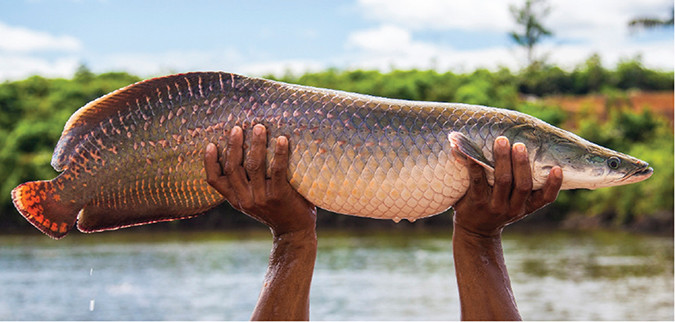
The pirarucu or paiche (Arapaima gigas) is the largest freshwater fish reared in the Amazon. Pirarucu fillets are highly nutritious, lack spines and present a light flavor appreciated in Brazil and overseas. Moreover, the fast growth of the fish in the first year — up to 10 kg — and its obligate aerial breathing adaption are remarkable aspects of this Amazon species.
Its captive production has limited environmental impacts, as farms typically do not use hormones or antibiotics, and advocate traceability. Despite impressive potential for the aquaculture of pirarucu, 2013 estimates for its production reported only 2,300 metric tons (MT). Due to the low technological levels applied in its captive reproduction, an irregular supply of fingerlings disrupts the whole production chain, which is still under development in Brazil. Limited technology is also observed in the other links of the chain, so when farmed, pirarucu is normally a secondary species.
The transfer of existing technologies used for other species into the production of pirarucu would significantly improve production levels. Research on pirarucu reproduction, nutrition, genetics, health and processing would also benefit the aquaculture of this species.
Production chain started
Led by Empresa Brasileira de Pesquisa Agropecuária (Brazilian Agricultural Research Corp.) and in collaboration with Serviço Brasileiro de Apoio às Micro e Pequenas Empresas (Brazilian Micro and Small Business Support Service) and the Ministry of Fisheries and Aquaculture, a series of actions were triggered in 2012 to provide research on capital areas as well as the immediate transfer of existing technologies in the fields of reproduction, nutrition, health and genetics of the Amazon pirarucu.
Additionally, a technological evaluation of the production of pirarucu in the Amazon was made to assess the status of this production chain in Brazil.
Reproduction
The pirarucu is at an early stage of domestication, so reproduction in captivity is still considered the big challenge. Among the main issues are a complicated sex identification of the fish and adult broodstock management.
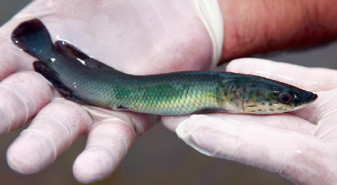
Often, producers stock several adults in ponds or small dams without proper knowledge of their origin and age, and wait for spontaneous spawnings to occur during the rainy season, so larvae or juveniles can then be captured. This practice results in a low level of reproduction and raises the risks of inbreeding.
As the sexual maturity of the species occurs after four or five years of life, when fish reach a weight of 40 to 60 kg, it is very costly to maintain broodstock in an ineffective system like this. With no guidance of broodstock mating and no individual tagging or registering of fish age, records of mating or genetic relatedness, control of reproductive parameters is basically absent. This enormously contributes to the irregular offerings of fingerlings in the market.
In this context, the isolation of couples into different earthen ponds is now generating a higher control of reproduction and productivity. This naturally necessitates the adoption of practices for proper identification of the broodstock. Evaluation of the color patterns of mature adults is the empirical method used by most producers, but its accuracy falls short.
Although its access to most producers is limited, a more-precise sex identification method is the use of enzyme immunoassay kits for detection of vitellogenin, a protein produced only by mature females. Especially when allied with passive integrated transponder tagging, these kits would support much more efficient broodstock management and help prevent inbreeding, a huge problem encountered at most of the fish farms.
The transfer of these simple technologies would enhance the fingerling production in the Amazon. Further studies of more controlled reproduction will ensure a more constant offering of fingerlings throughout the year.
Fingerlings
The fingerling stage is marked by feed training in which a gradual transition is made from the natural zooplankton feed to a dry feed ration with 45 to 50 percent crude protein. This process can take from 10 to 20 days. Normally done inside a laboratory, it is one of the most critical points in fingerling production, as high mortality and susceptibility to diseases are common at this stage.
Beyond the feed training, water quality and stocking issues can favor the development of body and branchial ectoparasites, especially Thichodina species and monogenea flatworms, which are the main causes of mortalities at these early stages. In addition, as the fingerlings are normally captured more than 10 days after hatching, an initial parasite load is often present due to contact with the environment and parents. These factors result in variable success among hatcheries, which is reflected in the fingerling prices and productivity in adult growth.
The feed training of fingerlings is an intense and careful phase that requires specialized labor and detailed observation. Fry that exit training without an effective transition to dry feed should be returned to the initial stages of training, although most producers have not adopted this approach.
In addition, the adoption of best practices for sanitary management would also help solve early-stage mortality problems. These include the control of fingerlings coming into the laboratories, proper early diagnosis of diseases to allow preventive treatments, disinfection of structures and devices used in rearing, and appropriate control of water quality.
Also important is knowledge of the pathogenicity of the diseases that infect fingerling pirarucu, and the influence of parental health conditions. This would lead to methods for prevention and offer specific treatments for the different diseases that affect pirarucu at early life stages.
Growout
The rearing of pirarucu adults is commonly done in earthen ponds and dams, but cage production has also been tried. In general, pirarucu growout is divided into two phases. In the first 90 to 120 days, fish measure 10 to 15 cm in total length and reach weights of 600 g to 1 kg.
In the second phase, pirarucu reach approximately 10 kg after 270 to 300 days. Better feed efficiency is reported for systems in which forage fish complement the ration offered. This is due to the fact that the available commercial rations do not fully meet the nutritional requirements of the species. This contributes to a high feed-conversion ratio of 2.0 or greater and severely impacts final production costs. On the other hand, health problems during growout are generally minimal, at least when the fingerlings have successfully completed feed training and have good health.
Considering that pirarucu feed on zooplankton during the first phase, fertilization of the earthen ponds is a practice that can complement commercial rations. The development of rations that address the nutritional requirements and mouth size of the species will be essential to optimize captive production. Further research is required, but this will only become viable to the feed industry when the pirarucu production chain gains volume and greater structure.
Processing, commercialization
Most Brazilian fish-processing plants have no production line or methods of desensitization and slaughtering adapted to large fish such as pirarucu. Fresh fillets and frozen or salted products are the main items offered to the market. Utilization of byproducts, especially the scales and leather, which could make the processing more profitable, is rare. Once again, the main obstacle at this stage is the irregular production, which limits the opening of national and international markets.
Brazil already has a private initiative of pirarucu production at industrial scale with the beginning of a model of vertical integration. This company stimulates the production of pirarucu by offering trained fingerlings, technical assistance and a purchase guarantee to the local fish farmers, who in turn grow out the fish. Over the last few years, the adoption of this model has led to an increase in the production of in captivity.
Perspectives
Only the synergic efforts of research and development institutions, technical agencies and the production sector could provide new technologies for farming pirarucu and effectively transfer them to producers. Moreover, marketing strategies should be adopted to expand the market niches. The production model must incorporate technologies for traceability to ensure sustainability and help reduce the depletion of natural stocks.
The ongoing research and technological transfer initiatives undertaken over the last three years have so far shown that pirarucu is unquestionably a potential candidate for further aquaculture. If the remaining issues in the production chain can be solved, pirarucu can become one of the main fish species produced in Brazil.
Authors
-
Adriana Ferreira Lima
Empresa Brasileira de Pesquisa Agropecuária (Embrapa)
Quadra 104 S, LO1, Lt. 34
77020-020 Palmas, Tocantins, Brazil
[114,98,46,97,112,97,114,98,109,101,64,97,109,105,108,46,97,110,97,105,114,100,97]
-
Ana Paula Oeda Rodrigues, Eduardo Sousa Varela, Lucas Simon Torati, Patricia Oliveira Maciel
Empresa Brasileira de Pesquisa Agropecuária (Embrapa)
Tagged With
Related Posts
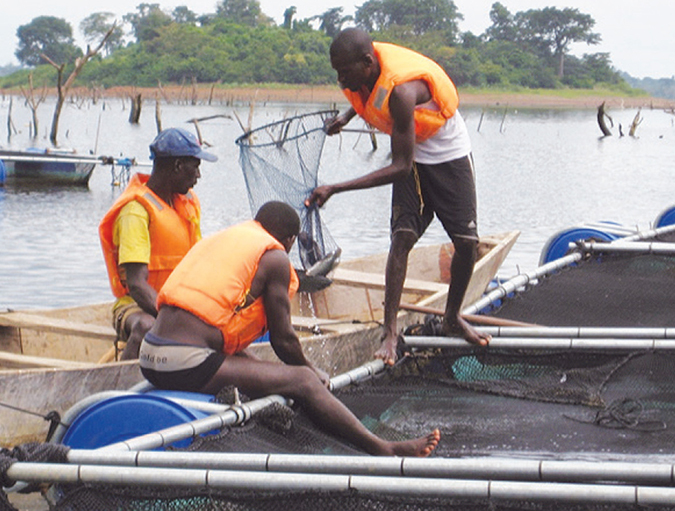
Innovation & Investment
Large-scale tilapia project driving aquaculture development in Ivory Coast
A large-scale aquaculture project in Ivory Coast, with "soft technology" adopted by Societe d’Elevage et de Distribution de Poissons, allows the full growing cycle to be controlled using local materials, manpower and inputs.
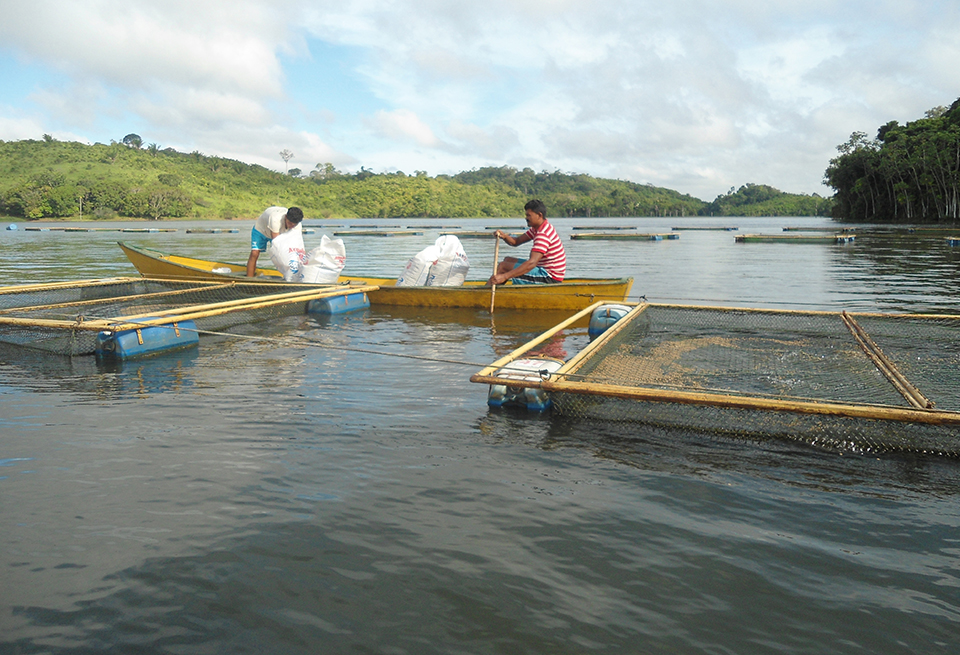
Innovation & Investment
Aquaculture planning, development in Brazilian federal waters
The aquaculture industry in Brazil is moving toward further expansion with the support of the federal government. A key strategy of the More Fishing and Aquaculture plan is the development of aquaculture in federal waters. The plan promotes sustainable development of fisheries and aquaculture by linking those involved and consolidating state policies addressing social inclusion, security and food sovereignty. Tilapia is the main farmed fish, although tambaqui and others have potential for large-scale production due to their wide acceptance by consumers.
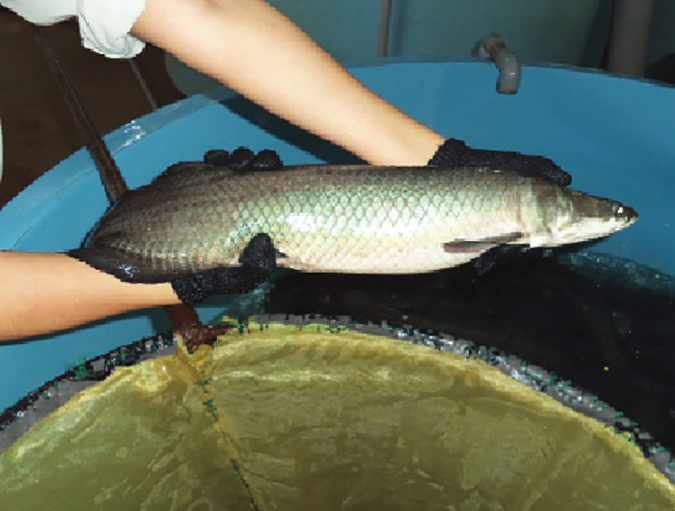
Aquafeeds
Soy-based feeds evaluated for production of Amazonian paiche
A cooperative feeding demonstration conducted by USSEC and Amazon Fish Products S.A. evaluated the use of soy to partially replace fishmeal in diets for paiche, or pirarucu, the largest freshwater fish species.
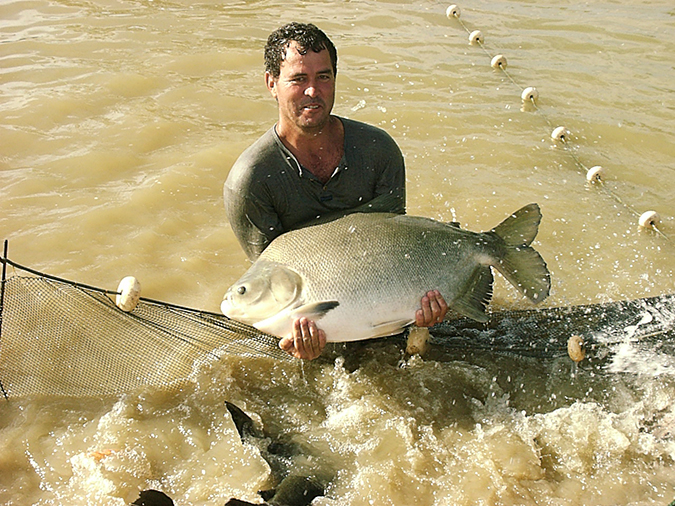
Intelligence
Brazilian aquaculture: Constraints and challenges (Part 1)
The Brazilian aquaculture industry has been growing steadily during the last two decades. Despite facing a number of challenges it is looking at continued growth and a larger role in the export markets.


